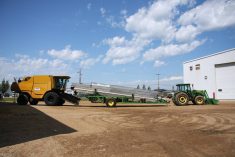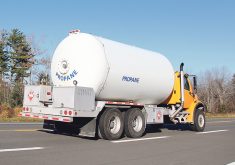The Prairie Agricultural Machinery Institute began began dryer research four decades ago, publishing its first report in 1985 and establishing it as the dryer authority.
PAMI engineer Lorne Greiger offers his insights on fuels and dryer types.
Greiger said he thinks portability is the main advantage of propane. As new farming areas open and are cleared, natural gas will not likely be available. Nor is it likely that natural gas be available to farmers establishing a new bin yard in traditional farmland.
“Natural gas is cheaper on a per-BTU basis, but if you can’t get access, price comparisons really don’t matter,” Greiger said.
Read Also

Trump’s tariffs take their toll on U.S. producers
U.S. farmers say Trump’s tariffs have been devastating for growers in that country.
He added that natural gas has a drawback in terms of bin yard location. Unless an accessible line is close to a future planned dryer site, running a farm tap pipeline can be prohibitively expensive. Also, power companies are not obligated to install a farm tap — especially on a high-pressure line.
What about the risk of fire and explosion?
“There’s a danger any time you’re working with pressurized vapour fuel,” Greiger said. “There are additional hazards working with propane. You’ll have an instantaneous fire that has to be dealt with immediately. You can have an explosion. Whereas with natural gas, you’ll have a fire.… if you have a leak with either gas, you have to deal with it immediately.”
Natural gas has a higher ignition temperature than propane. Natural gas ignites at 650 C compared to propane ignition temperatures between 490 C and 550 C without a spark. For natural gas to ignite, there must be a limited concentration of natural gas mixed with air.
By comparison, gasoline has an ignition temperature between 27 C and 150 C. The various diesel blends have ignition temperatures ranging for 374 C to 760 C.
How many Prairie dryers go up in flames every year?
Grieger said he’s been asked that question on many occasions, but nobody seems to know. There is no formal organization or system for reporting the fires.
“Farmers don’t like to share their bad experiences. They’re more likely to share their good canola yields than share the fact that they lost part of that top canola crop in a fire. In fact, with the oil content of canola, this is the most likely crop to go up in flames. Make sure the fire extinguishers are fully charged when you’re drying oilseeds.”
















